- Anatomical terminology
- Skeletal system
- Skeleton of trunk
- Skull
-
Skeleton of upper limb
- Bones of shoulder girdle
- Humerus
- Bones of forearm
- Bones of hand
- Skeleton of lower limb
- Joints
- Muscles
- Heart
- Blood vessels
- Lymphatic system
- Nervous system
- Respiratory system
- Digestive system
- Urinary system
- Female reproductive system
- Male reproductive system
- Endocrine glands
- Eye
- Ear
Phalanges of hand
The phalanges (Latin: phalanges) are small bones of fingers found in hands and feet. Each hand is composed of fourteen phalanges. The human thumb has two phalanges named the proximal and distal, while the rest of the digits have three - proximal, middle (intermediate) and distal phalanges.

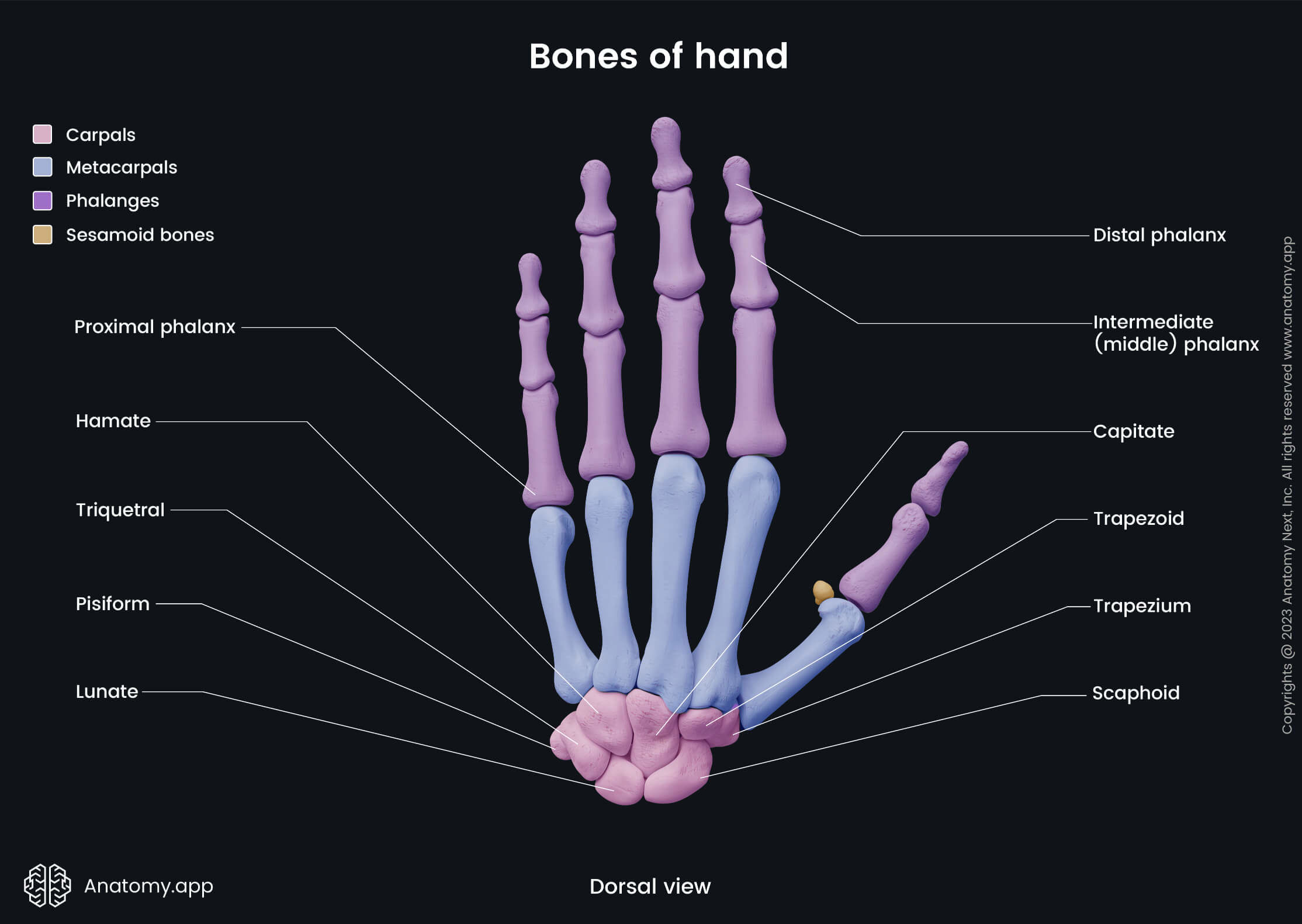
Each hand is composed of 14 phalanges, and each finger has three phalanges, except for the thumb (pollux), which has two. According to their location, the phalanges can be grouped into three groups:
- Proximal phalanges - largest phalanges that articulate with the metacarpal bones;
- Intermediate (middle) phalanges - middle phalanges that are found between the proximal and distal phalanges;
- Distal phalanges - smallest phalanges that have roughened areas at their distal tips (heads).

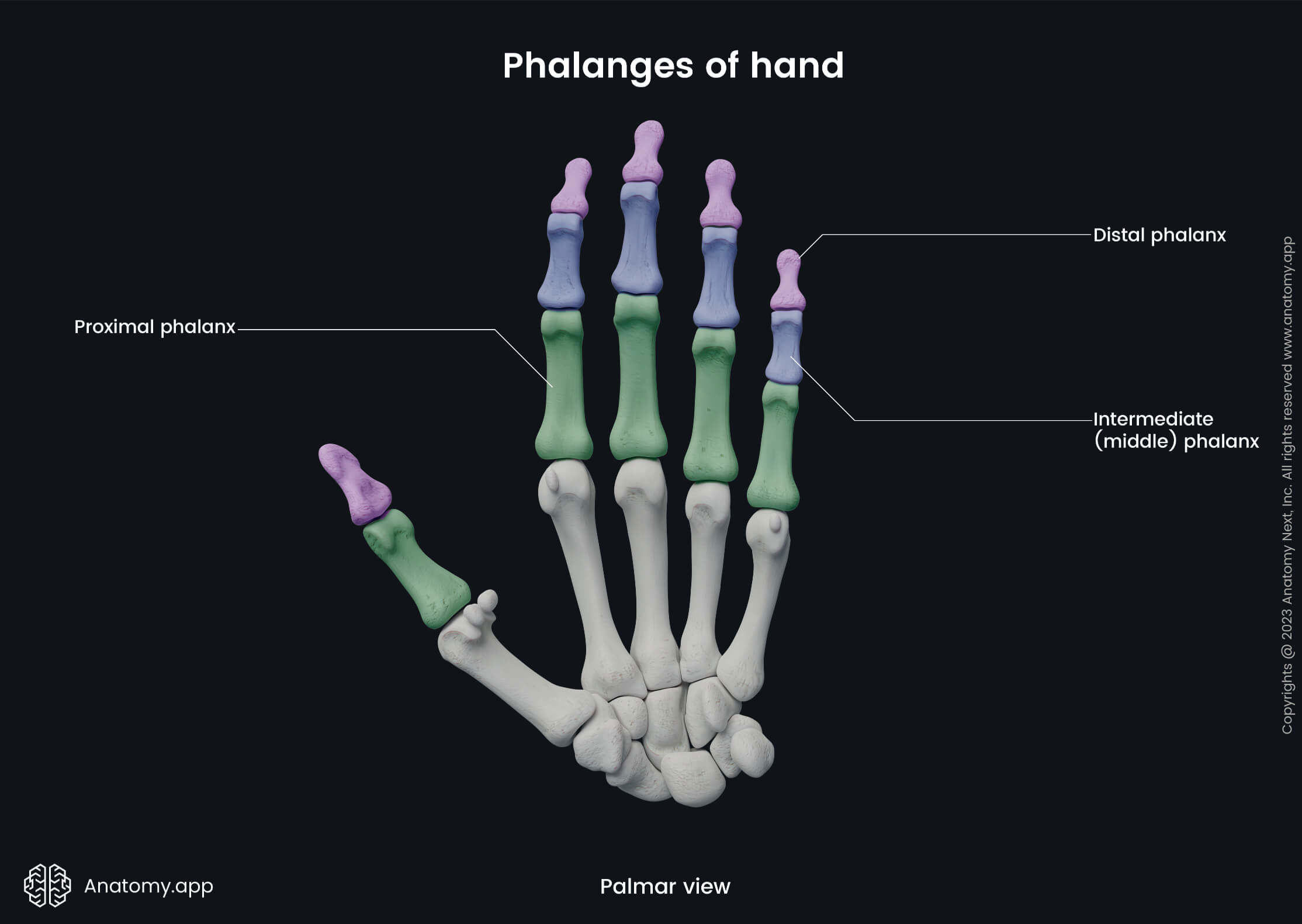
Parts of phalanges
All phalanges within each finger articulate with one another, forming interphalangeal joints. The proximal phalanges also articulate with the metacarpal bones of the hand to form metacarpophalangeal joints. Each phalanx presents with three parts:

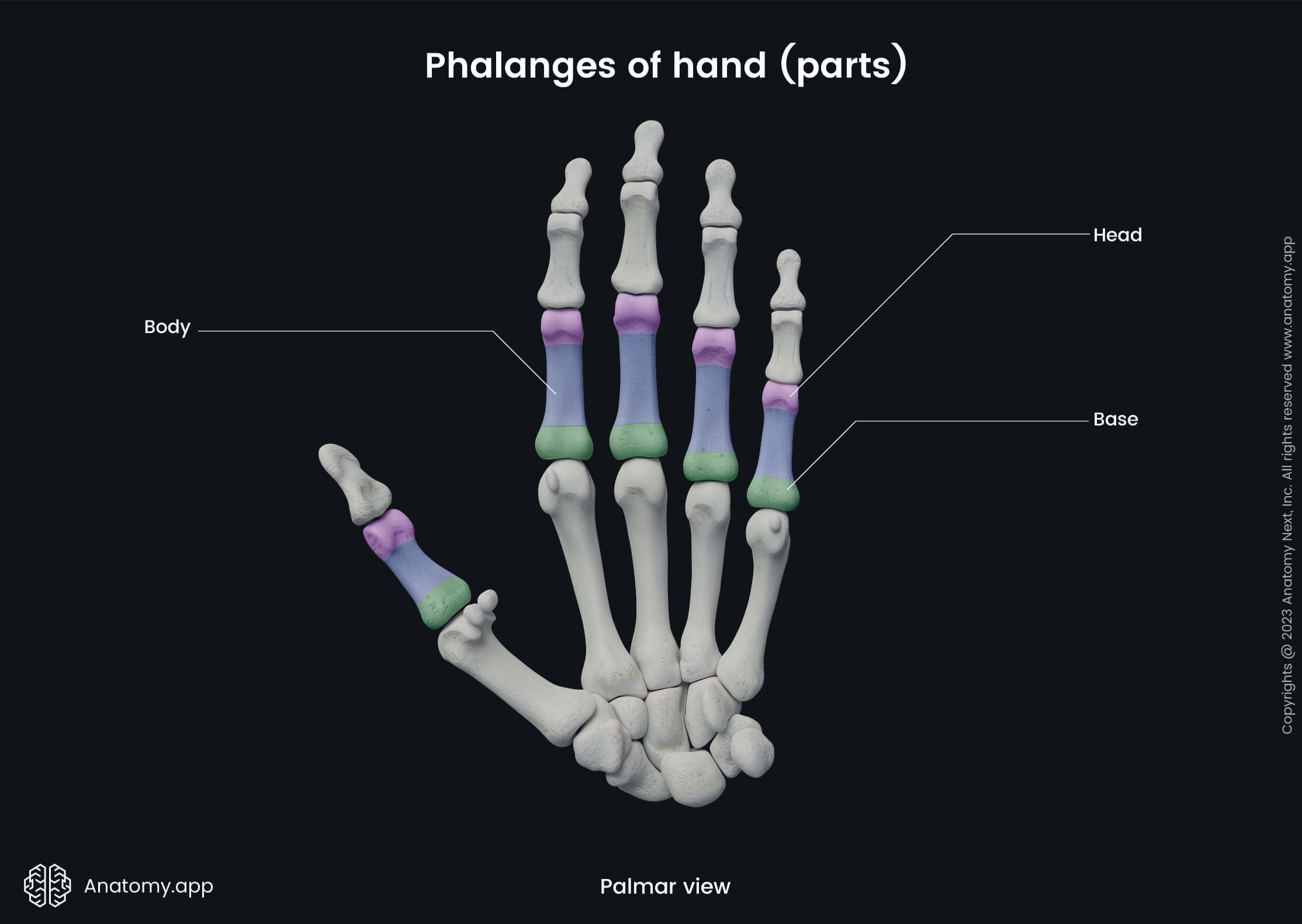
The base or proximal extremity is expanded proximal part. The base of each proximal phalanx contains oval and concave articular surfaces. In contrast, the bases of the middle and distal phalanges present with double concave articular surfaces separated by a median ridge.
The body or shaft is a distal continuation of the base. The body of each phalanx has two surfaces - palmar and dorsal, and it is more concave on the palmar and convex on the dorsal surface. The sides of the body have rough areas for attachment of flexor tendons.
The heads or distal extremities are expanded and rounded distal endings. The heads of phalanges are smaller than the bases, and they contain pulley-shaped articular surfaces, except for the distal phalanges as their heads appear flattened and have distal tuberosities.
Proximal phalanges
The proximal phalanges (Latin: phalanges proximales) are the most proximal bones of the fingers in the hand and foot. Each hand is composed of five proximal phalanges corresponding to five fingers. These bones are the largest ones of all phalanges.
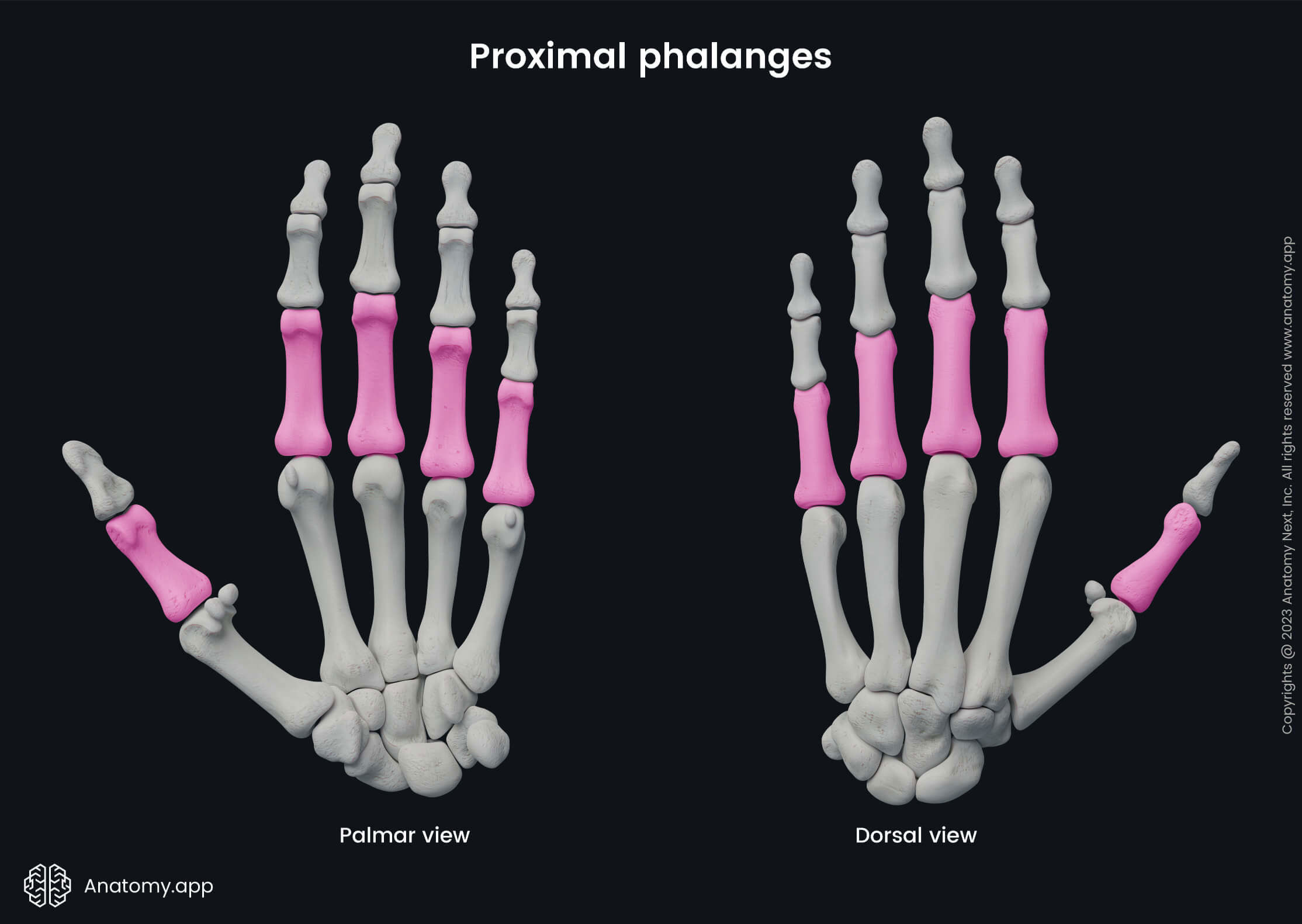
Each proximal phalanx has a proximal end or base with an oval-shaped articular facet for articulation with the head of the corresponding metacarpal bone. The shaft of each proximal phalanx is long, and it is flat on its palmar surface. Dorsally and transversally proximal phalanges appear convex.
The lateral and medial borders look sharpened, and they serve as attachment sites for the tendons of the flexor muscles. Distally, the articular surface of the head communicates with the base of the middle phalanx, or in the case of the thumb, with the distal phalanx.
Middle phalanges
The middle phalanges (Latin: phalanges mediae) are also known as the intermediate phalanges, and they lie between the proximal and distal phalanges. In total, each hand contains four middle phalanges as the thumb lacks it. The middle phalanges present with the same-named three parts as the proximal phalanges, but their bodies are shorter.
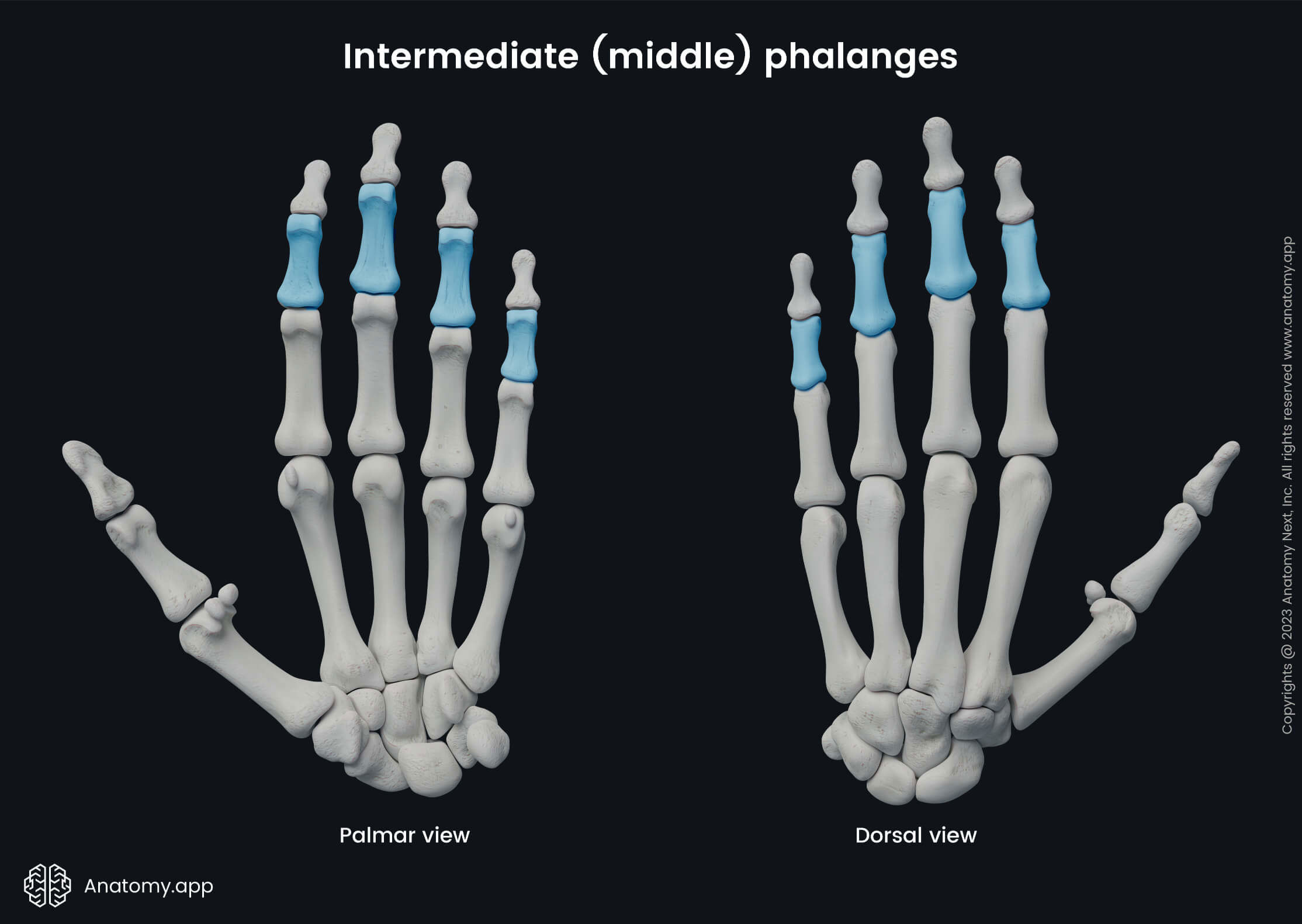
The base of each middle phalanx contains two articular surfaces - medial and lateral facets - that both surround a smooth groove located in the middle. The bases of the middle phalanges articulate with the distal ends of the proximal phalanges. Distally, the head of each middle phalanx articulates with the corresponding base of the distal phalanx.
Distal phalanges
The distal phalanges (Latin: phalanges distales) are the last bones found in the tips of the fingers. Each hand contains five distal phalanges, and each distal phalanx is tapered distally. They present with a broader base for articulation with the middle phalanx, or the proximal phalanx within the thumb.
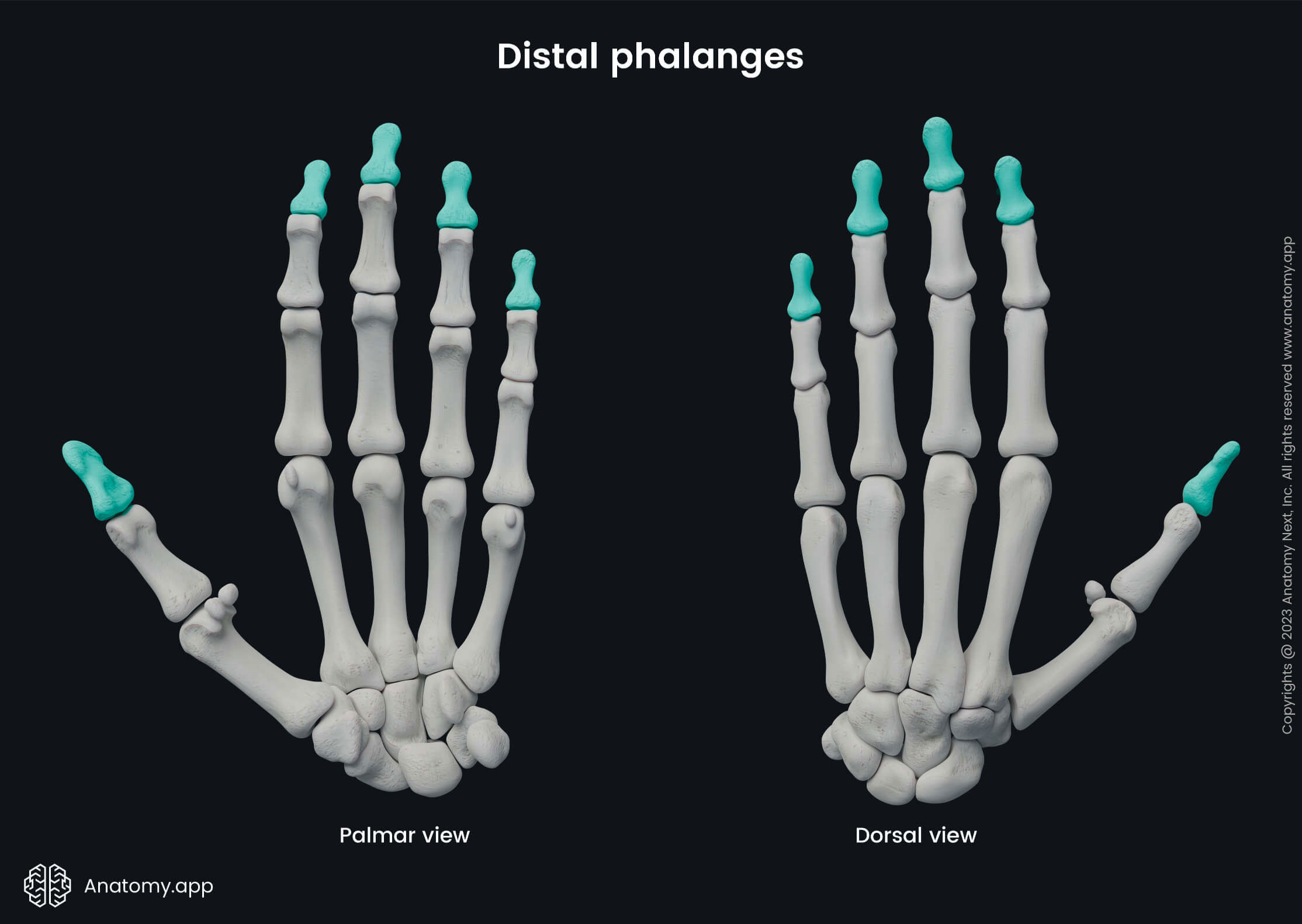
The distal surfaces of the distal phalanges appear rough, especially on their palmar surfaces, where insert tendons of the flexor digitorum profundus muscles. Dorsally, heads of the distal phalanges are flattened, and they contain rough and elevated areas known as the tuberosities of the distal phalanges.